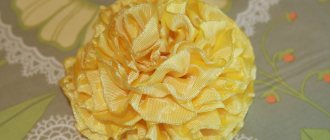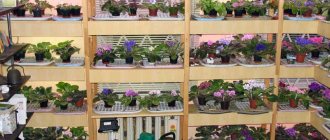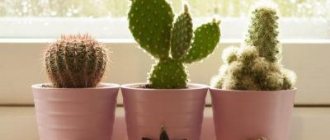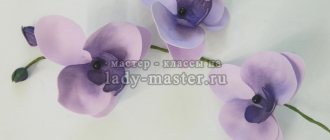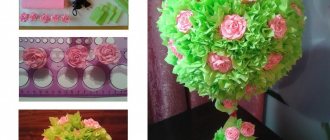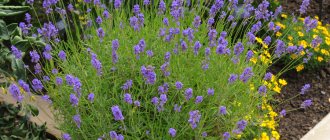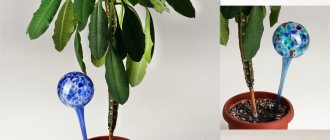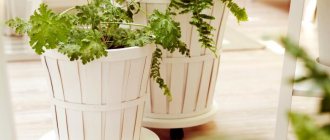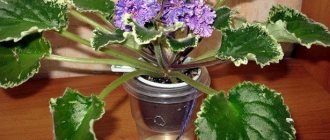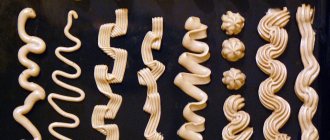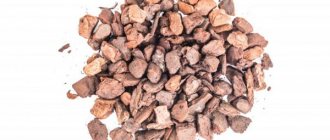Houseplant lovers know how difficult it can be to place all the flowers because window sills and tables are not enough to create a beautiful home greenhouse.
Those for whom growing indoor flowers becomes a real hobby always have a rich collection of various plants that require a lot of space. Each of them must be provided with enough well-lit space to ensure comfortable conditions.
To make them look impressive, it is important to place them well in the interior of the room. Floor, wall, and hanging flower shelves, which are made in any, even the most unusual design, are ideal for this.
Advantages of self-made shelves
There are products on sale that can be used to quickly solve the problem of placing a home flower garden. But they are not very diverse; they are the same type of standard designs.
When you make flower shelves yourself, you can create your own unique room design, choose the best option for each plant, and how to present it more effectively.
When you make shelves yourself, you can choose the materials for them yourself, calculate their dimensions, the required number of stands, and develop your own original design.
The cost of a shelf or several shelves will be much cheaper than store-bought products. And if you make such structures from waste materials, unnecessary old furniture or other suitable items stored in the house, then the only costs will be time and labor.
Backlight
Seedlings are grown in February-March, and this is not the sunniest time of the year. Plants may absolutely lack the light necessary for photosynthesis and mass growth. To solve this problem, additional lighting is installed on the racks. There are several types of lamps suitable specifically for growing seedlings.
- The most affordable and simplest option is incandescent lamps (17 Lm/W). They are ineffective because they provide little light and at the same time generate a lot of heat, which can harm the seedlings.
- Low-power fluorescent lamps, such as LB or LBT daylight (70–100 Lm/W). They produce cool light with a low proportion of red radiation.
Shelving illuminated with fluorescent lamps
Long-lasting and economical LED lamps (80–110 Lm/W). Their advantage is the ability to select the desired intensity and suitable spectrum.
LED lamps are easy to use and efficient
Metal halide sodium lamps (up to 100 Lm/W) are efficient and economical, and are also easy to use. The downside is that they do not contain a portion of the blue spectrum. Gas-discharge sodium lamps (200 Lm/W). Their yellow-orange glow is not irritating to the eyes, but they will require a regulating device. The glow of mercury lamps is as close as possible to the level of daylight. Phytolamps are very popular among gardeners, including for lighting seedlings. They are compact, environmentally friendly, economical and durable. Even if the seedlings are located close to such a lamp, burns will not form on the leaves.
Phytolamps for lighting seedlings
Also used are xenon gas-discharge lamps (100 Lm/W), halogen (25 Lm/W), linear (47 - 93 Lm/W), and neodymium.
When choosing a lighting device, pay attention to the presence of a choke. It gets very hot and heats up the shelf on top. Therefore, leave a gap of 4–6 mm between the shelf and the device. Lamps with electronic ballast do not have heating problems.
Whatever type of lighting you choose, keep in mind that seedlings will do better on the south side. To improve lighting efficiency, install reflective foil screens on the sides and back of the rack. Do not forget that each plant has its own level of illumination. You can adjust the intensity by changing the height of the lamps above the plants.
Installation of LED lighting
Due to their ease of installation and operation, LED lamps have become the most common among gardeners growing seedlings. You will need:
- red and blue LEDs;
- hot glue or thermal paste;
- a base for placing strips of LEDs (can be made of any material);
- a power supply that will provide the required voltage and current stability;
- electrical wire and plug.
Types of shelves for flowers
According to their designs and placement methods, flower shelves are divided into several types:
- Floor-standing. The most durable, reliable products that are especially suitable for large plants in large, heavy pots. They come in various designs - in the form of racks, whatnots, single stands, spacers, pyramids, A-shapes, ladders, etc. They require a lot of free space to accommodate them.
- Wall-mounted. Can be hung on walls using various fasteners. They allow you to save more space, especially corner ones. The most common types are shelves, racks, compositions of several separately placed single shelves or various original configurations (triangles, squares, honeycombs, etc.).
- Hanging. An excellent solution for saving space. Such structures are attached to ceilings, window openings, and are designed for light, small flower pots. For reliability, strong anchor hooks are used as fastenings to ceiling surfaces, onto which hanging shelves are then attached. Rope, leather belts, chains, cables and other suitable materials are used as hangers to which the shelves are attached.
- For window sills. Shelves for flowers on the windowsill are made in the form of small figured stands or in the form of multi-level racks that are attached to window openings.
All these structures can be installed not only indoors, but also used to decorate balconies, loggias, verandas, and some even open areas in summer cottages.
Compositions of several, made in the same style, different types of shelves - floor, wall, hanging - look beautiful. You can choose homogeneous materials for them (wood, plastic, metal) or combine different ones.
The following materials are used to make shelves:
- Wood. Shelves made of this durable, eco-friendly material, when assembled correctly, can withstand heavy loads. Wood is easy to process; even beginners can handle making shelves of simple designs. Experienced craftsmen make wooden shelves decorated with carvings, inlays, and paintings. Without professional training, you can beautifully decorate a shelf using the decoupage technique.
- Plywood. This material is even easier to work with, but it is no longer as durable as wood. Various shaped products can be easily cut from plywood. The original design can be made using the technique of painting with paints, decoupage, decorated with rhinestones, beads, other decor, and also covered with self-adhesive film with an imitation of any texture. Plywood shelves can be combined with other materials.
- MDF boards, chipboards. From the waste of these cheap, but durable and neat materials, with the help of a set of simple tools you can make cute original shelves. Cuts of all parts must be treated with a special adhesive tape, selected by color.
- Metal. This material is used in the form of profiles or chrome tubes for the frame, as well as metal grids or solid sheets for shelves. Beautiful exclusive products are made from forged metal.
- Plastic. To make shelves, plastic pipes, sheet plastic (transparent, colored, smooth, textured) and even PVC window sills are used.
- Strained glass. Transparent shelves visually save space. But they are only suitable for light, small flower pots. The glass should be no thinner than 0.5 cm. They are attached to metal frames with special clamps. Slots are made for them in the wooden frames, into which the glass is then inserted.
What forms are there?
Design templates have a huge selection of different variations. The following types of flower stands are often found in shape:
- Ladder. The multi-stage model will create a cascading effect in your floral corner.
- A-shaped floor models. This variation, in addition to the cascading body, has a double-sided position, which favorably emphasizes the visual image of a flower gallery.
- Rack. The simplest form of the options for floor or wall shelves. Here you can find the most unusual types of products: corner, straight, without crossbars.
- Retractable stand. The model is complex in execution, but convenient in practical use.
- The swing is paused. We have already mentioned this option: horizontal strips are laid on suspended supports.
Plywood wall shelf
To manufacture such a product with a structure assembled only from sheets, you will need plywood and veneer for processing cuts. If the plywood shelves will be attached to a wooden frame, then another beam is prepared.
Tools and additional materials you will need:
- a manual (or electric) jigsaw for cutting plywood along curly lines;
- circular saw - to obtain more even straight cuts;
- a set of figured files for processing edges;
- sandpaper for sanding surfaces;
- screwdriver;
- self-tapping screws;
- fastening elements, awnings;
- scissors, pencil, paper;
- PVA glue (or carpentry glue);
- stain, paints and varnishes for surface finishing.
How to make a shelf for flowers from plywood, sequence of work:
- draw a sketch and make patterns from paper;
- according to the patterns and calculations made, cut parts from plywood (timber);
- align the edges using needle files;
- sand the surfaces with sandpaper;
- assemble the entire structure using glue and screws,
- treat with stain;
- stick edge veneer tape onto the open sections of the parts;
- varnish;
- After the varnish has dried, secure the canopies.
Corner flower shelves
You can save space using a corner shelf. These products are floor-mounted and wall-mounted, placed on internal or external corners. They are made from any materials.
They can be compositions of several single shelves or full-fledged spacious racks. The assembly and fixation of such structures depends on their types and materials.
Wooden shelves
The preparation of wood parts and the assembly of shelves from them is done using almost the same technology as from plywood. The resulting wooden flower shelves are stronger and have a greater variety of designs. They use timber and boards.
Even from the remaining scraps you can make beautiful original products. Interesting designs of flower shelves are made from ordinary containers - boxes, pallets.
Flower shelf made of wood and metal
Combined products with metal frames made of profiles or pipes and wooden shelves are assembled in the form of volumetric racks, small shelves, or hanging shelves.
Holders for pots are made from metal, which are then attached to wooden planks.
Forged metal shelf
Products made by artistic forging create a classic, luxurious environment. Such shelves can be made only of metal or combined with wood or glass. The results are very impressive interior details.
Most of these shelves are made to be floor-mounted due to their heavy weight. Forged shelves for flowers on the wall are made in small and medium sizes, and special fasteners with increased strength are installed for them. The walls must also be strong enough to support this weight.
Criteria for selecting outdoor products
In the warm season, flower growers often display home flowers outside. When there is a private courtyard, space allows, then pyramids, slides are organized, and shelves are placed on the terraces. In this case, you need to understand:
- The wooden structure must be stable, otherwise it may be overturned by a gust of wind.
- It should remain compact so as not to interfere with movement, and be convenient for watering and caring for plants.
- The wood must be treated with moisture-resistant paint or enamel, impregnated against insects and fungus.
Elegant lacquered items, which will instantly warp and dry out under the scorching sun, are not suitable for the street. Designs should be practical, with enough surface area to safely accommodate pots and boxes. A-shaped stands, “pyramids”, and massive slides are popular.
Shelf made of laminated chipboard and chrome tubes
To make such structures, you can use scraps from new laminated chipboards or parts of disassembled used furniture. To process cuts, you will need an adhesive edge or T-shaped (U-shaped) edges.
For chrome-plated tubes, you need to select flanges corresponding to their sizes, which are needed as supports for fastening the shelves. If the structure is floor-mounted, then you can install wheels to conveniently move the shelf with plants to another place, if necessary.
Work order:
- cut the required number of shelves;
- process the edges with an adhesive edge or edging (the U-shaped one is filled with a rubber mallet, for the T-shaped one you need to make grooves in the edges on a milling machine);
- Using a Forstner drill or a milling cutter, make holes in the prepared slabs that correspond to the size of the tubes; in the upper shelf they should not be through;
- insert the tubes into the holes and secure them with flanges on both sides of the plates (the top one with the bottom one);
- attach furniture wheels or legs to the bottom of the tubes.
How to place violets correctly?
Saintpaulias should not be arranged tightly on shelves and racks so that the plants are comfortable and there is also room for the growth of flowers and leaves. In order to make the conditions for keeping violets as comfortable as possible, it is recommended to place them no more than four flowers on a shelf.
Of course, a house can have not one, but several racks at once.
In this case, it is important to follow the rules for their location:
- distances from each other and from walls;
- the size of the aisle between the racks and the like.
Distance
- distance from the structure to the wall – 1.5 meters;
- distance from the rack to the ceiling – 45 centimeters;
- the passage between the racks is at least 1.2 meters.
The optimal dimensions of the rack will be discussed further.
Optimal sizes
The question of the optimal size of shelving is one of the most controversial. The main thing in this matter is to observe the parameters of the distance from the floor to the bottom shelf, from the top shelf to the ceiling, as well as the distance of the shelves from each other and maintaining a distance sufficient for passage between flower pots.
Glass shelf on the window
Glass shelves look light and airy and transmit light well, which is beneficial for plants. They choose strong tempered glass with an optimal thickness of 0.5 cm. They are made in the form of racks with wooden or metal frames that are attached to window openings.
The structures can be solid with vertical and horizontal supports, as well as without vertical supports, when only horizontal supports are attached to the window frame, on which glass shelves are then laid.
Do you need lighting?
When assembling a rack for seedlings with their own hands, some gardeners think that they can do without additional lighting. It is worth noting that even for a structure that was mounted on a window, it is necessary to provide for the presence of lamps of the appropriate type.
In winter, daylight hours are quite short. Due to lack of natural light, seedlings may not develop well. Photosynthesis processes will proceed slowly. Because of this, biomass growth will not occur at the required pace. In order for plants to develop normally, it is necessary to install additional lighting on the rack. This will provide normal conditions for the seedlings and allow the seedlings to gain strength before transplanting them to the site
It is important to choose the right lamp that will meet all requirements
Ideas for making unusual shelves with your own hands
To make original designs for flower shelves, you can use the following ideas:
- the shelf is made in the form of a tree trunk; liana plants, reminiscent of tree branches with leaves, are placed on the stands;
- an arch in the shape of a heart is made, on the stands of which flowering plants are placed;
- The floor structure can be made in the form of a pyramid, house, bicycle, and the wall structure can be made in the form of a honeycomb, stairs, waves.
Simple rules for arranging shelves
When placing flower shelves, take into account the illumination that is necessary for plants. Shelves are installed further from the window for shade-tolerant plants, and those that love bright light are placed in well-lit places, but not in direct sunlight.
Some plants cannot tolerate drafts, especially when ventilated during the cold season. When arranging shelves, it is important to create a healthy environment for all plants.
All designs in color and shape must fit harmoniously into the interior of the room.
Conclusion
You can make beautiful flower shelves yourself without any special preparation. First you need to come up with your own original design or find a ready-made one suitable for the interior of the room where the plants will be placed.
Available materials make excellent products that create an unusual atmosphere in the room and become bright decorative elements.
The final stage is decoration
By creating a shelf, you can create your own product design. By choosing the right materials and taking a little time, you will get a unique masterpiece!
- For example, a plastic product comes in different colors. For an original design, you can attach decorative handrails.
- The wooden shelf is painted with sequins. This gives the product shine and shine.
- Glass shelves are often decorated with patterned metal elements.
Also, for a craft to become beautiful, it is not necessary to paint it or attach anything to it. Just place vases and beautiful stones, toys, shells on it. In addition, furniture can be decorated with various fakes and toys.
Don't be afraid to experiment! Create new masterpieces and improve your skills! An indoor planter is just the beginning. Nothing brightens up your home like handmade items.
